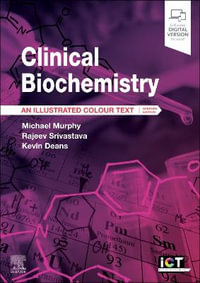1. Electronic Instrumentation for Electrochemical Studies.- 1. Introduction.- 2. Operational Amplifiers.- 2.1. Introduction.- 2.2. Functional Description.- 2.3. The Ideal Op Amp.- 2.4. Reality Regained.- 2.5. Static Errors.- 2.6. Dynamic Error and Stability.- 2.7. Noise.- 3. Further Building Blocks.- 3.1. Introduction.- 3.2. Threshold Detectors.- 3.3. Instrumental Amplifier.- 3.4. Current Follower.- 3.5. Voltage References.- 3.6. Current References.- 3.7. Operational Integrator.- 3.8. Operational Differentiator.- 3.9. Active Filter Design.- 4. Potential and Current Control.- 4.1. Introduction.- 4.2. Principles of Polarization Control.- 4.3. Potentiostat Design.- 4.4. IR Compensation.- 4.5. Dynamic Response of Potentiostats.- 4.6. Galvanostats.- 4.7. Negative Impedance Converters.- 5. Analog Analysis of Current and Voltage.- 5.1. Introduction.- 5.2. Frequency Domain Measurements: General.- 5.3. Audio Frequency Bridges.- 5.4. Transformer Ratio Arm Bridges.- 5.5. Berberian-Cole Bridge.- 5.6. Direct Measurement.- 6. Digital Analysis of Current and Voltage.- 6.1. Basic Principles.- 6.2. Interconversion of Analog and Digital Signals.- 6.3. Analog-to-Digital Conversion.- 6.4. Digital-to-Analog Conversion.- 6.5. Time-to-Digital Conversion.- 6.6. Transient Waveform Recorders.- 6.7. Computer Interfaces.- 6.8. On-Line Computer Data Analysis.- 7. Future Trends..- References.- 2. Computerization in Electroanalytical Chemistry.- 1. Introduction.- 2. Architecture of a Laboratory Computer.- 2.1. Internal Communication Buss.- 2.2. The Central Processor Unit.- 2.3. Memory.- 2.4. Operation Input and Output Devices.- 2.5. Experimental Input and Output Devices.- 2.6. Communication with I/O Devices.- 2.7. Experimental Timing.- 3. Programming Languages.- 4. Microprocessors.- 5. The Electrochemist and the Computer.- 5.1. Ion Selective Electrodes.- 5.2. Pulse Polarography.- 5.3. Anodic Stripping Voltammetry.- 5.4. Alternating Current Polarography.- 5.5. Conductance Measurement.- 6. The Future.- References.- 3. Electrochemistry of Ion-Selective Electrodes.- 1. Definitions and Principles.- 1.1. Membrane-Format Devices.- 1.2. Segmented Potential Model for Membrane Pd's.- 1.3. Potential Profiles at Single Interfaces.- 1.4. Quasi-Thermodynamic Calculation of Interfacial Potential Differences.- 1.5. Potential Profiles and Potential Differences across the Interior of Membranes.- 1.6. Summary of Steady-State Diffusion Potentials and Total Membrane Potentials.- 1.7. Time-Dependent Membrane Potential Theory.- 1.8. Time-Dependent Membrane Potential Parameters.- 1.9. Potential-Time Responses after Activity Steps (Responses outside the Linear Regime).- 1.10. Potential-Time Responses for Solid Membrane Electrodes.- 2. Ion-Selective-Electrode and Membrane Electrode Formats and Materials.- 2.1. Conventional Ion-Selective Electrode (ISE) Formats-General Comments.- 2.2. Kinds of Cells.- 2.3. Materials.- 2.4. Interfaces and Reversible Ion Exchange.- 3. Types of Ion-Selective Electrodes.- 3.1. Crystalline, Primary, or Homogeneous Electrodes: Composition, Interferences, and Sensitivities.- 3.2. Crystalline, Primary, Heterogeneous Electrodes.- 3.3. Noncrystalline, Primary, Heterogeneous, and Homogeneous: Compositions, Interferences, and Sensitivities.- 3.4. Sensitized Ion-Selective Electrodes.- 3.5. Reference Electrodes and Combination Electrodes.- 4. Response Equations for the Steady State, Response Parameters and Examples.- 4.1. Noncrystalline, Primary, Heterogeneous, and Homogeneous.- 4.2. Glass Electrodes.- 4.3. Crystalline, Primary, Homogeneous, and Heterogeneous Electrodes (with One Charge Carrier).- 4.4. Junction and Diffusion Potentials.- 4.5. Activity, Activity Coefficients, and Ionic Strength.- 4.6. Junction Structure, Cracks, and Leaks.- 4.7. Selectivity Coefficients and Interferences.- 4.8. Low Activity Limits by Dilution (Detection Limits).- References.- 4. Polarography.- 1. Introduction.- 2. Principle of Polarographic Measurements.- 3. Drooping (Streaming and Hanging) Mercury Electrodes.- 4. Charging Current.- 5. Diffusion Controlled Processes.- 5.1. Ilkovi? Equation.- 5.2. Correction for Spherical Diffusion in the Ilkovi? Equation.- 5.3. Diffusion Current at a Streaming Electrode.- 6. Polarographic Diffusion-Controlled Waves.- 6.1. Differential (Derivative) Polarography.- 6.2. Diffusion-Controlled Waves of Complexes.- 6.3. Diffusion-Controlled Waves of Organic Substances.- 7. Polarographic Waves with Diffusion and Charge-Transfer Control.- 7.1. Analysis of Polarographic Waves.- 7.2. Irreversible Reduction of Complexes.- 7.3. Irreversible Waves of Organic Substances.- 7.4. Double-Layer Effects on Polarographic Charge-Transfer Kinetics.- 8. Kinetic Currents.- 8.1. Preceding Chemical Reaction.- 8.2. Reactions Parallel to the Charge-Transfer Reaction. Catalytic Currents.- 8.3. Subsequent Chemical Reactions (Follow-up Reactions-Postkinetic Waves).- 8.4. Double-Layer Effect on Kinetic Currents.- 8.5. Surface Kinetic Currents.- 8.6 Mixed Volume-Surface Kinetic Currents.- 8.7 Catalytic Currents of Hydrogen.- 9. Adsorption in Polarography.- 9.1. Adsorption of Reactant or Product.- 9.2. Adsorption of Electroinactive Substances.- 10. Polarographic Maxima.- 10.1. Maxima of the First Kind.- 10.2. Maxima of the Second Kind.- 10.3. Maxima of the Third Kind.- 11. Techniques Developed from D-C Polarography.- 11.1 Square-Wave Polarography.- 11.2. Pulse Polarography.- 11.3. A-C Polarography.- 11.4. Nonlinear Polarographic Techniques.- 12. Applications of Polarography.- References.- 5. Ellipsometry.- 1. Introduction.- 2. Theory of Ellipsometry.- 2.1. Polarized Light.- 2.2. The Jones Calculus.- 2.3. Partially Polarized Light: Stokes Vectors.- 2.4. Reflection of Polarized Light.- 3. Analysis of Polarized Light.- 3.1. Optical Retarders: The Quarter Wave Plate.- 3.2. Classification of Types of Ellipsometers.- 3.3. Null-Seeking Ellipsometry.- 3.4. Mueller Matrix Ellipsometry.- 4. Analysis of Results in Ellipsometry.- 4.1. The Three-Layer Models.- 4.2. Multilayer Models.- 4.3. Experimental Errors.- 4.4. Why is Ellipsometry So Sensitive?.- 5. Examples.- 5.1. Thin Nonabsorbing Anisotropic Layer on a Nonabsorbing Substrate.- 5.2. Rough Surfaces.- 5.3. Corrosion of Silver-A Multilayer Problem.- 6. Outlook.- References.- 6. Raman Spectroscopy.- 1. Introduction.- 2. Raman Vibrational Spectroscopy.- 2.1. Vibrations and Symmetry.- 2.2. Classical Interpretation of Raman Scattering.- 2.3. Depolarization Ratios.- 2.4. Experimental Details.- 3. The Electrochemical Cell.- 4. Review of Early Work.- 4.1. Species in Solution.- 4.2. Thin Films on Electrode Surfaces.- 4.3. Adsorbed Species at the Electrode/Electrolyte Interface.- 5. Surface Enhanced Raman Scattering (SERS) of Pyridine on Silver.- 5.1. Intensity of SERS Spectra.- 5.2. The Effect of Laser Excitation Frequency.- 5.3. SERS from Different Silver Crystal Planes.- 5.4. The Effect of Laser Power.- 5.5. Depolarization Ratios.- 5.6. Angular Dependence of Incident Radiation.- 5.7. The Halide Ion and Pyridine.- 5.8. Lewis Acid Adsorbed Pyridine.- 5.9. pH Dependence of the SERS of Pyridine.- 5.10. Differential Capacitance Measurements.- 5.11. Potential Modulation of SERS Spectra.- 5.12. Build-up of SERS during the Roughening Cycle and with Time.- 5.13. Observation of SERS Spectra from Metal Sols and the Relationship to Roughened Electrodes.- 5.14. Observation of SERS via Excitation of Surface Plasmons.- 5.15. Effect of Other Metals in Silver Alloys on SERS.- 6. The Background Spectrum.- 6.1. The Background Continuum.- 6.2. The "Carboxy" Background.- 7. Adsorption of Halide Ions with Coadsorbed Water.- 8. The Adsorption of Cyanide Ions.- 9. Experiments Relevant to the Physical and Chemical Origins of the SERS Effect.- 10. The Origins of SERS.- 11. The Enhancement Mechanisms.- 11.1 Conventional Resonance Raman Scattering.- 11.2. Surface-Induced Resonance Raman Scattering (SIRRS).- 11.3. Enhancement via Coupling with Surface Electromagnetic Waves.- 11.4. Resonance Raman Scattering via Electron Tunnelling Processes.- 11.5. Image Field Raman Scattering Mechanisms.- 11.6. Electric Field Intensity Enhancement Mechanisms.- 11.7. Electron-Hole Pair Scattering Mechanisms.- 11.8. Modulated Reflectance Raman Scattering Mechanisms.- 11.9. Enhancement Models Involving More Than One Mechanism.- 12. Assessment of Present Position and Prospects.- References.- 7. Electron Spin Resonance.- 1. Introduction.- 2. Principles of ESR Spectroscopy.- 3. Information Drawn from ESR Data.- 4. Techniques of External Radical Generation.- 5. Internal Generation of Radicals.- References.- 8. Electron Spectroscopy for Chemical Analysis (ESCA) and Electrode Surface Chemistry.- 1. Introduction.- 2. Spectral Interpretation.- 3. Coupling of Electrochemical and ESCA Studies.- 4. Anodic Film Formation on Metal Electrodes.- 5. Anodic Film Formation on Alloys.- 6. Electrochemical Deposition.- 7. Electrocatalysis.- 8. Conclusions.- References.- 9. Field Ion Microscopy.- 1. Introduction.- 2. Operation of the FIM.- 2.1. Field Ionization.- 2.2. Field Evaporation.- 2.3. Field-Induced Stresses.- 2.4. Similarity of FIM atid Electrochemical Interface.- 3. Experimental Features of FIM.- 3.1. FIM System Requirements.- 3.2. Tip Preparation.- 3.3. Image Amplification and Photography.- 3.4. Image Interpretation.- 3.5. Electrochemical Operations on FIM Tips.- 4. Applications and Suggested Experiments.- 4.1. Electrodeposition: Previous Work.- 4.2. Suggested Electrodeposition Studies.- 4.3. Electrocatalysis.- 4.4. Corrosion.- Acknowledgment.- References.- 10. Application of Electron Microscopy to Electrochemical Analysis.- 1. Introduction.- 2. Survey of Methods.- 3. Sample Preparations.- 4. Sample Analysis.- 5. Summary and Conclusions.- Standard Reference Texts.- 11. Classified Bibliography of Electroanalytical Applications.- 1. Polarography.- 1.1. D-C Polarography.- 1.2. Differential and Derivative Polarography.- 1.3. Oscillographic Polarography.- 1.4. A-C Polarography.- 1.5. Square-Wave Polarography.- 1.6. Radio Frequency Polarography.- 1.7. Pulse, Differential Pulse Polarography.- 2. Linear Potential Sweep and Cyclic Voltammetry.- 2.1. General Principles and Theory.- 2.2. Instrumentation.- 2.3. Applications.- 3. Stripping Voltammetry.- 3.1. General Principles and Theory.- 3.2. Instrumentation, Electrodes, and Cells.- 3.3. Applications-Anodic.- 3.4. Applications-Cathodic.- 4. Ion Selective Electrodes (ISE).- 4.A.1. Books and Reviews.- 4.A.2. Instrumentation and Method of Preparation.- 4.A.3. Applications.- 4.B.1. Solid Membrane Electrodes: Theory.- 4.B.2. Solid Membrane Electrodes: Instrumentation and Methods of Preparation.- 4.B.3. Solid Membrane Electrodes: Applications.- 4.C.1. Liquid Ion Exchange Membrane Electrodes: Theory.- 4.C.2. Liquid Ion Exchange Membrane Electrodes: Instrumentation and Method of Preparation.- 4.C.3. Liquid Ion Exchange Membrane Electrodes: Applications.- 4.D.1. Enzyme Electrodes: Theory.- 4.D.2. Enzyme Electrodes: Instrumentation and Method of Preparation.- 4.D.3. Enzyme Electrodes: Applications.- 5. Coulometry.- 5.1. General Principles, Reviews, and Books.- 5.2. Theory and Its Application to Kinetic Studies.- 5.3. Instrumentation, Cells, etc..- 5.4. Applications.- 6. Chronopotentiometry.- 6.1. General Principles and Theory.- 6.2. Applications.- 7. Special Electrode Materials.- 7.1. Alloy Electrodes.- 7.2. Solid Electrodes.- 7.3. Liquid Electrodes.- 8. Special Cells and Electrode Configurations.- 8.1. Thin Layer Cells: Theory, Methodology, and Application.- 8.2. Rotating Ring Disc Electrode and Related Configurations.- 8.3. Microelectrodes.- 9. Spectroelectroanalytical Chemistry.- 9.1. General Principles and Reviews.- 9.2. X-Ray Photoelectron Spectroelectrochemistry.- 9.3. Auger Electron Spectroelectrochemistry.- 9.4. Low Energy Electron Diffraction Spectroelectrochemistry.- 9.5. Raman Spectroelectrochemistry.- 9.6. Reflection Spectroelectrochemistry.- 9.6.1. Internal Reflection Spectroelectrochemistry.- 9.6.2. Specular Reflection Spectroelectrochemistry.- 9.7. Ellipsometry.- 9.8. Transmission Spectroelectrochemistry.- 9.9 Other Spectroelectrochemical Techniques.

























